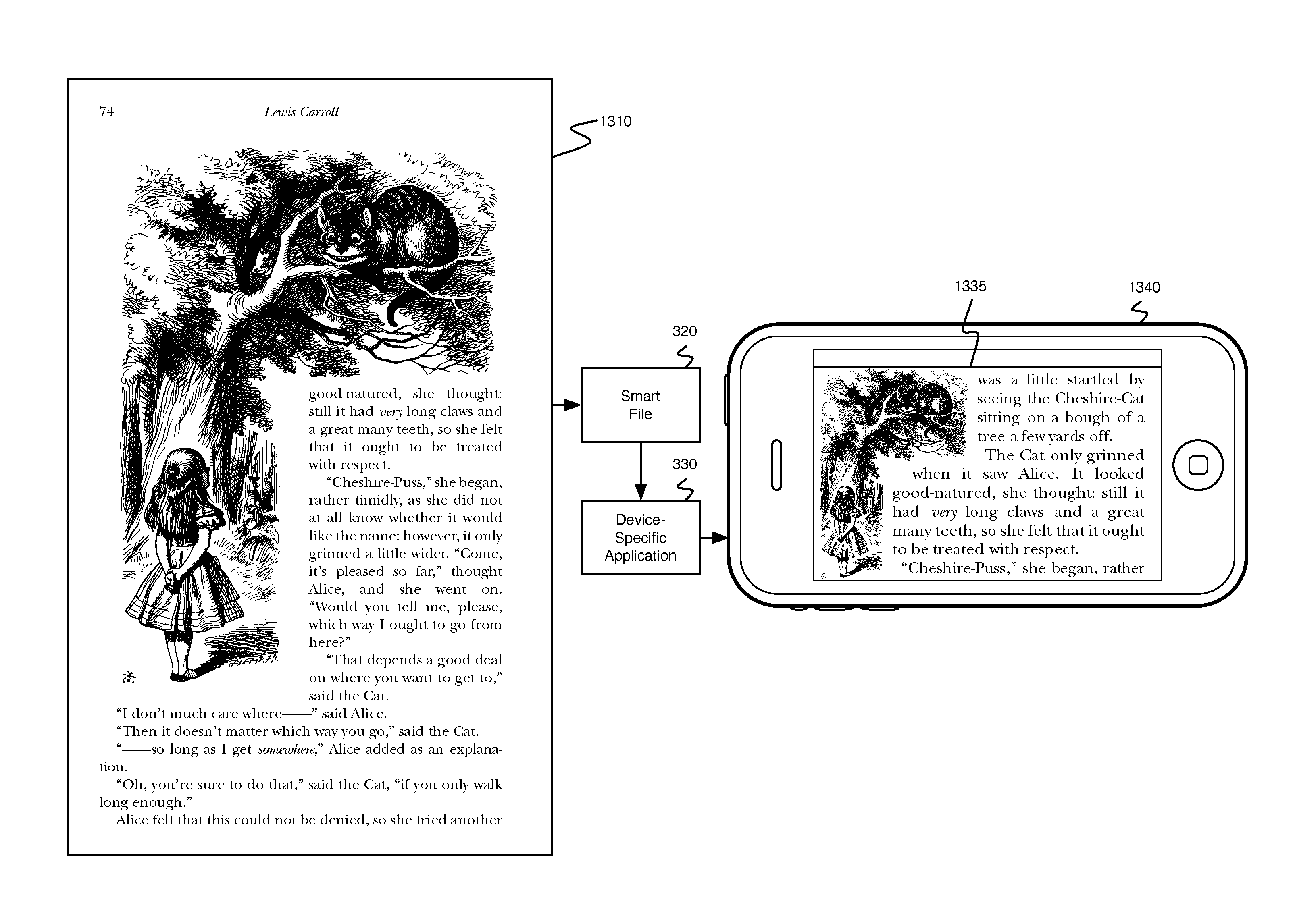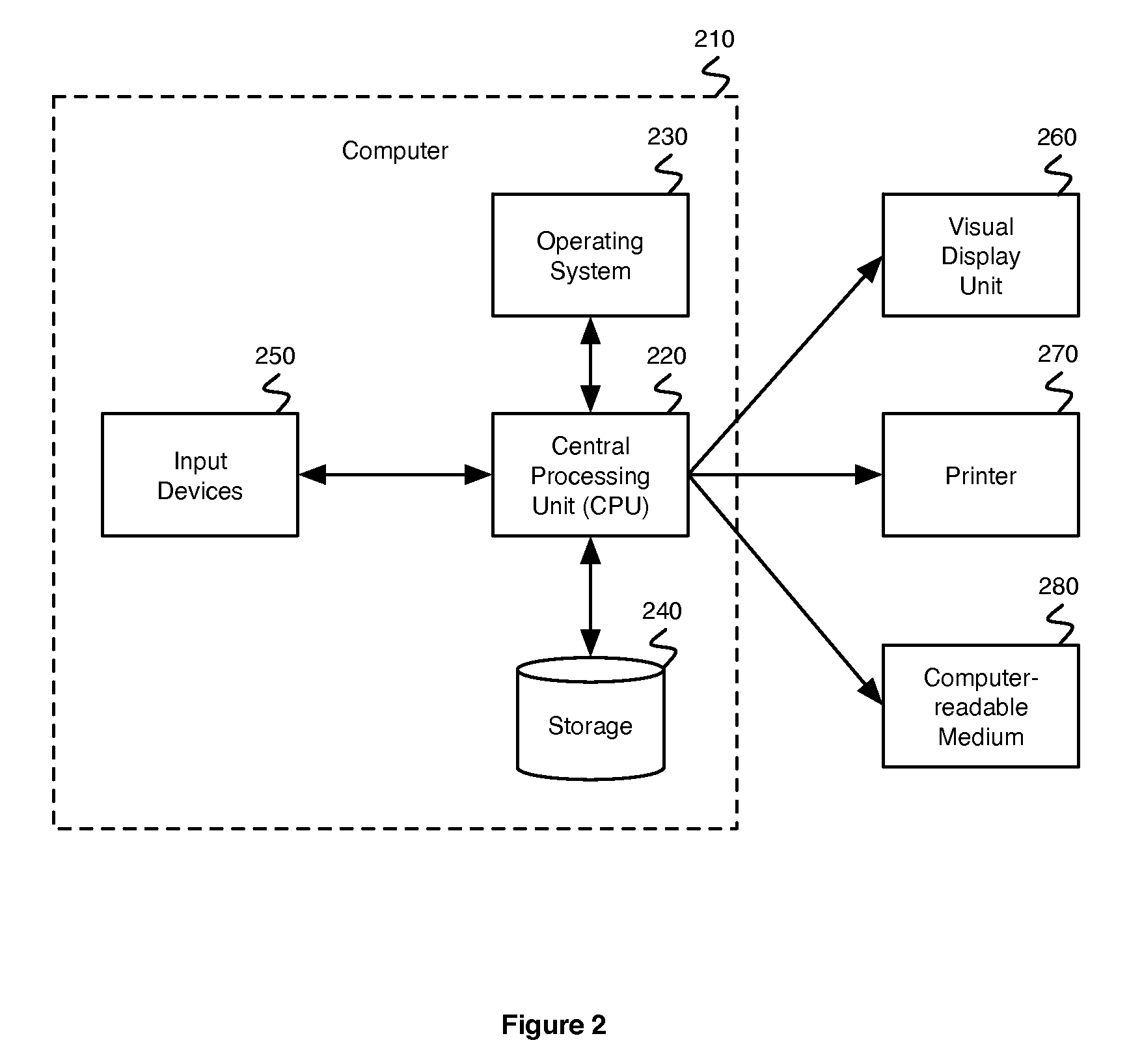System and method for converting the digital typesetting documents used in publishing to a device-specfic format for electronic publishing
a typesetting and electronic publishing technology, applied in the field of typesetting documents, can solve the problems of limited text composition, design information and other metadata not preserved, and the display of text on the screen is limited by the processing speed of the device and the size of the document, so as to facilitate the return to the source page content
- Summary
- Abstract
- Description
- Claims
- Application Information
AI Technical Summary
Benefits of technology
Problems solved by technology
Method used
Image
Examples
Embodiment Construction
[0035]The invention provides a system and method for converting the digital typesetting documents used in print publishing to a device-specific format for electronic publishing. Our “smart file and device-specific application” approach maintains the “look and feel” of the source document used for print publication while typesetting for a specific device. Although this approach requires considerably more resources to create a smart file for each device-specific format, the smart file retains the unique typesetting characteristics of the printed book, is more aesthetically pleasing, and is easier to read. Furthermore, the device-specific application can render the smart file more quickly thereby eliminating any latency.
[0036]A smart file contains the text content (just like a plain text file) and information about the appearance (typographic details the typeface, type size, kerning, character scaling, etc.) and position (exact location of lines, words, letters, etc.) of text and other...
PUM
 Login to View More
Login to View More Abstract
Description
Claims
Application Information
 Login to View More
Login to View More - R&D
- Intellectual Property
- Life Sciences
- Materials
- Tech Scout
- Unparalleled Data Quality
- Higher Quality Content
- 60% Fewer Hallucinations
Browse by: Latest US Patents, China's latest patents, Technical Efficacy Thesaurus, Application Domain, Technology Topic, Popular Technical Reports.
© 2025 PatSnap. All rights reserved.Legal|Privacy policy|Modern Slavery Act Transparency Statement|Sitemap|About US| Contact US: help@patsnap.com



